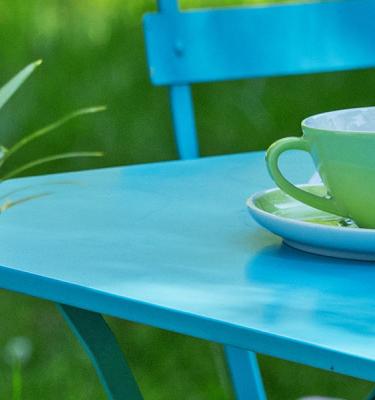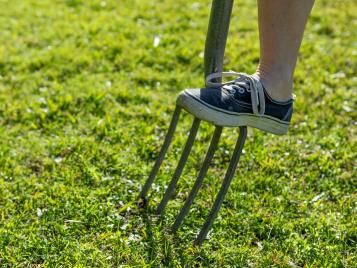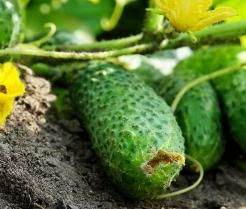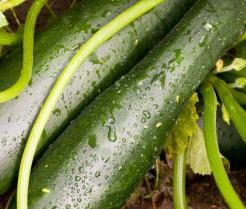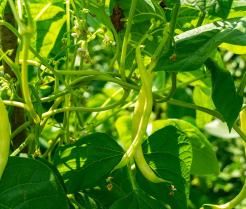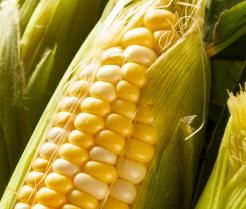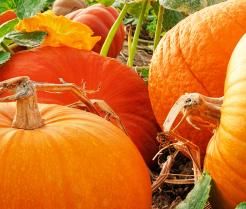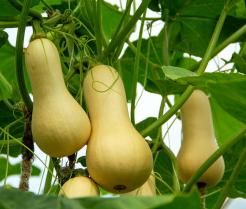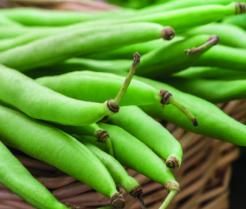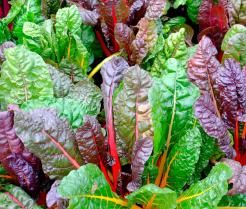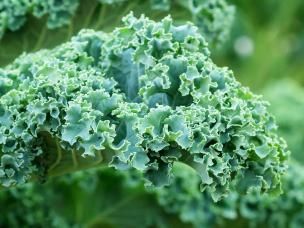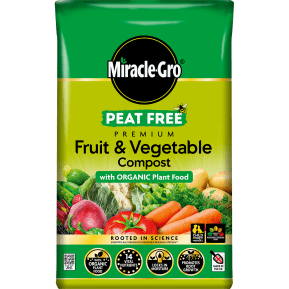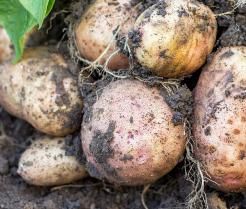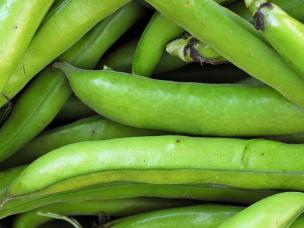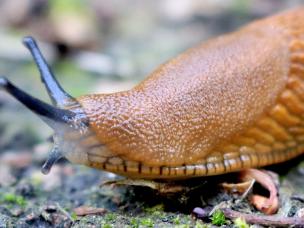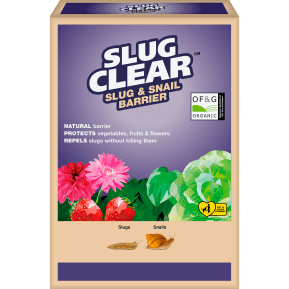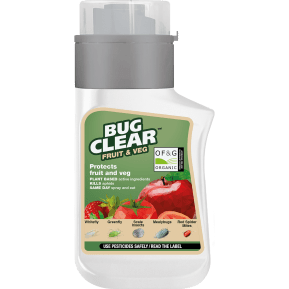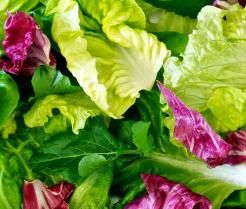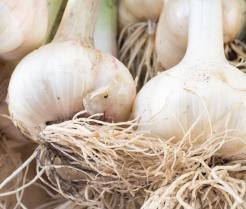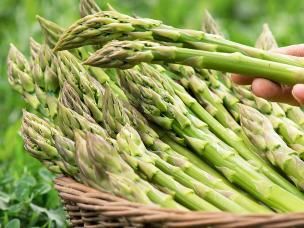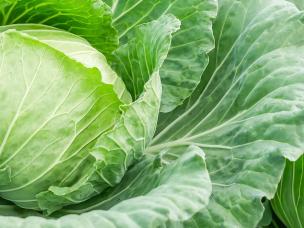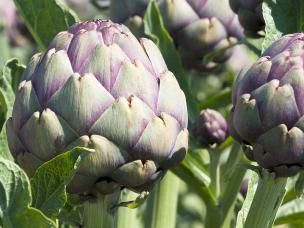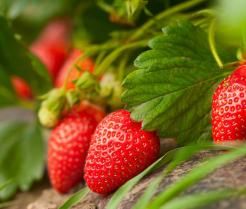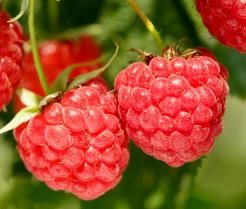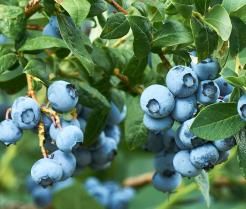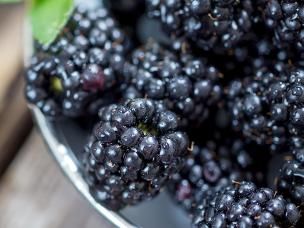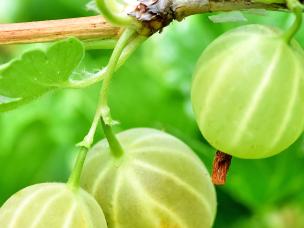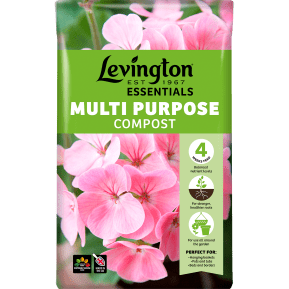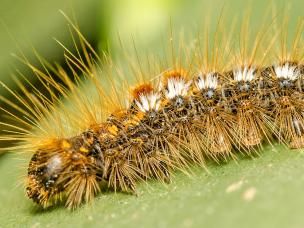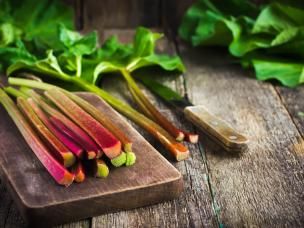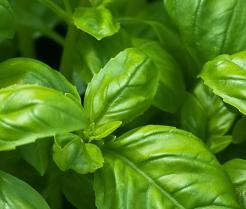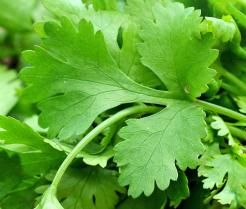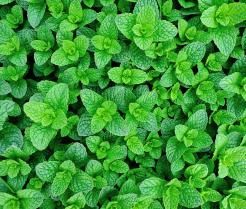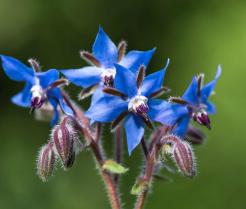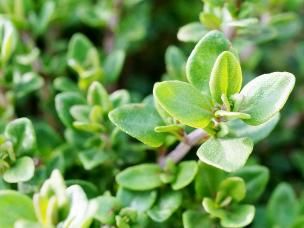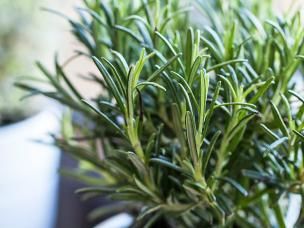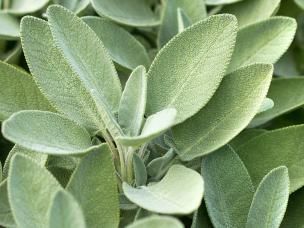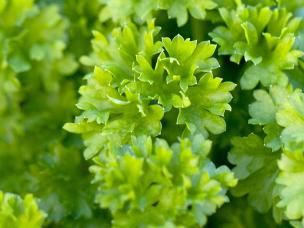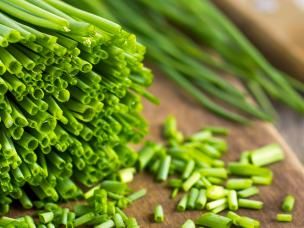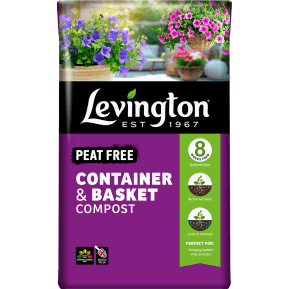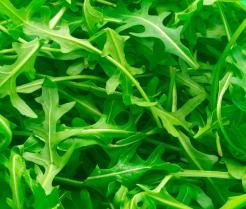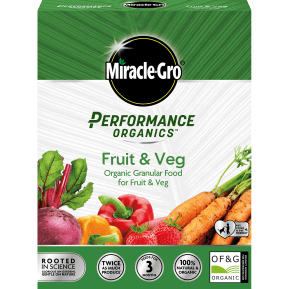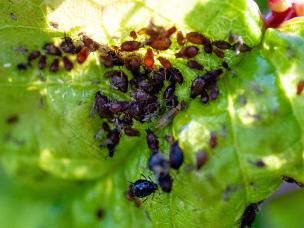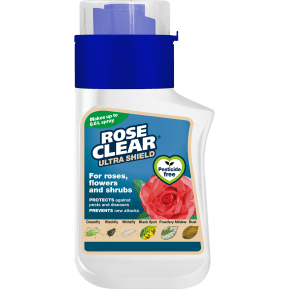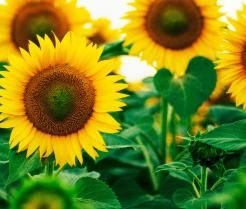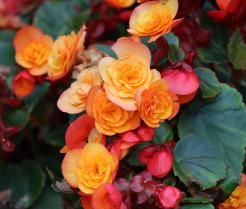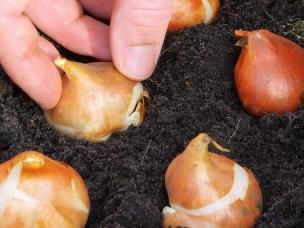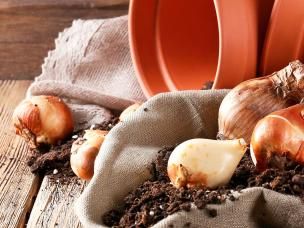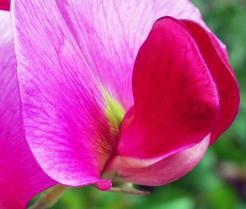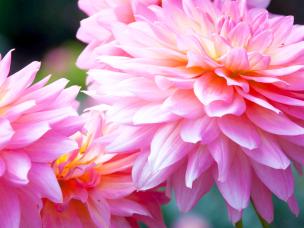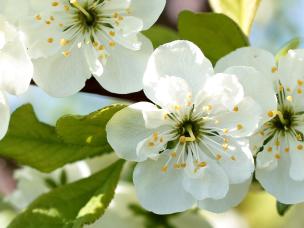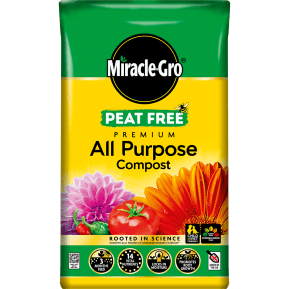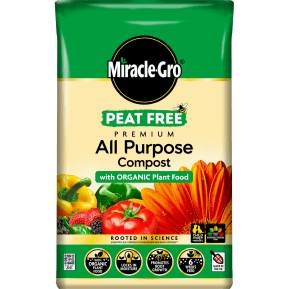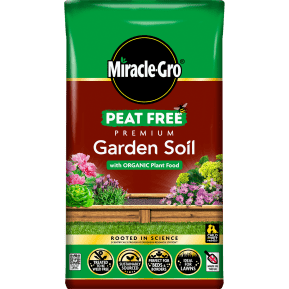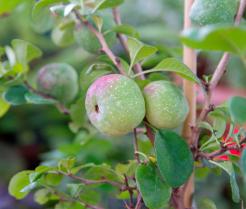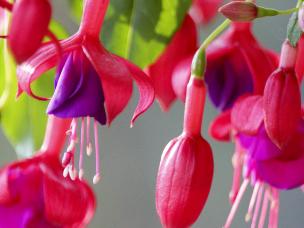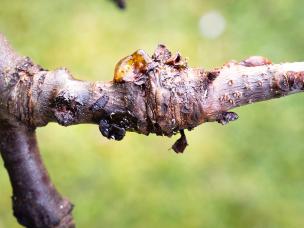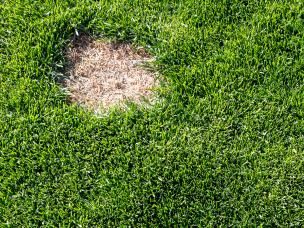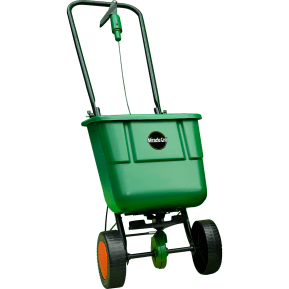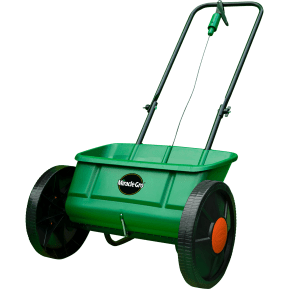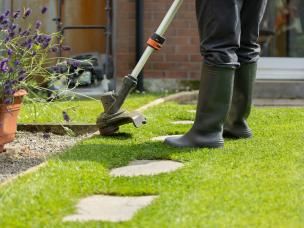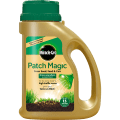May Gardening: Your Monthly Garden Guide
May can be a mixed bag as far as the weather goes, with warm sunny days followed by rainy days and even the occasional late frost. It’s a busy month in the garden and a great chance to get lawns in shape for summer, so make the best of that warm weather when it does arrive. Keep an eye on the forecast and be prepared to protect young plants with fleece if the temperature drops suddenly. When it comes to deciding what to grow in May, you’ll have abundant options both in the vegetable patch and the flower garden.
What to plant in May and other May gardening tips
If you’re wondering what to plant in May then there are plenty of seeds to sow and young seedlings to plant out. Whatever your gardening plans this month – whether you’re growing your own fruit and veg, or planting flowers for a spectacular summer display – choose a category below for our essential May gardening tips.
May is a beautiful time of year to be enjoying your garden. Luckily, if you have a vegetable or fruit patch, you’ll have plenty of excuses to get out and bask in the spring sunshine. There will be much to harvest in time for those refreshing summery salads, and it’s a great time of year to plant herbs and spices.
Vegetables
If you’re looking for vegetables you can plant in May, then broccoli, Brussels sprouts, turnips and kale all tend to do well at this time of year, alongside leeks and tomatoes. Elsewhere in your vegetable patch there’s plenty of maintenance to be done and even a few vegetables that will be ripe for the harvest.
What vegetables to plant in May
May is a busy time for sowing seeds, especially in the vegetable garden. Although the weather is much warmer, there’s still a chance of cold snaps in early May, so some seeds are better sown in pots or modules indoors. Place them in a greenhouse or on a sunny windowsill to germinate and grow until June. For seeds sown directly outdoors, prepare the ground first by digging it over, clearing weeds and stones, and raking it smooth.
This is a good opportunity to enrich your soil, providing a fertile environment for your vegetable seeds to put down strong roots. You can mix your soil with a naturally derived, peat-free compost to help control water availability, and even enhance it with a granular plant feed specifically designed for vegetables.
Some of your more tender seedlings may need hardening off before you plant them out, so simply place them outdoors during the day and move them back inside at night. Do this for between 7-10 days before planting them out permanently.
If you’ve been growing leeks or tomatoes in pots, now is an ideal time to plant them out. Leeks can go outside in the garden, and tomatoes in greenhouses.
If you’re eager to give your vegetable patch a new lease of life, then the following vegetables can all be planted outside in May:
- Beetroot
- Broccoli
- Brussels sprouts
- Carrots
- Parsnips
- Radishes
- Swiss chard
Plant seedlings of the following
The following vegetables can be sown indoors in May:
- Sweetcorn
- Courgettes
- Squash
- Pumpkins
- Lettuce
- Cucumbers
- Runner and French beans
- Kale
Growing Vegetables in May
Once you’ve decided what vegetables to plant in May and harvested any veg that have come into season, you can start thinking about the maintenance of your existing plants, and there’s lots to do.
As the weather warms up, weeds start growing and garden pests like slugs and snails become more active. Watch out for early signs of pests and disease, and tackle them before they get out of hand but remember that not all garden visitors are harmful. Insects such as ladybirds help tackle garden pests, and you can encourage them into your garden by providing appropriate shelter and pollen-rich blooms. If pests continue to be a problem, you can consider using a naturally derived pest control product to discourage blights such as aphids, mealy bugs and red spider mites.
Earth up your potatoes, drawing soil up around the lower part of the plant to exclude light from the developing tubers, which become green and poisonous if exposed to light.
Once beans start to appear, pinch out the tips of broad bean plants to reduce the risk of blackfly, and put up supports for climbing beans and pea plants.
May is a good opportunity to transplant Brussels sprouts plants to their final cropping positions, and you can start hardening off tomato seedlings ready for planting outdoors next month. Consider enriching the soil with a granular organic plant feed formulated to produced more flavourful produce.
What vegetables to harvest in May
May is a great time for reaping the rewards of your vegetable garden. Just like in April, you’ll continue to see all the hard work paying off, with the following vegetables ready to harvest in May:
- Asparagus
- Spring cabbage
- Artichokes
Fruit
If you’re wondering what fruit to plant in May then the answer is berries, berries, berries! Otherwise, May is all about keeping your fruit trees healthy and free of pests who tend to be rife at this time of year.
What fruit to plant in May
Generally speaking, it’s the soft fruits that are likely to be ready to plant in May. Remember to water them regularly throughout their first year to ensure they get established and bear fruit for years to come.
Before planting, consider enriching your soil with a peat-free, naturally derived compost specially formulated for fruit. This will provide the optimum structure for strong root growth, controlling water availability and keeping your plants fed for up to six weeks.
Any of the following will take particularly well to your garden in May:
- Blueberries
- Raspberries
- Blackberries
- Strawberries
- Gooseberries
These fruit trees and bushes can all be planted in May:
Growing Fruit in May
May is all about protecting your plants from those pesky garden pests, as the fruit will be just starting to appear on trees and bushes. Strawberries can be protected from birds with netting, and you should check gooseberry bushes for sawfly and caterpillars.
While protecting your fruit from unwanted pests, it’s important to ensure that pollinators are still able to get to the plants. So, if you do use netting, make sure it’s not too fine. Birds out, bees in!
Soft fruit bushes like blackcurrants, gooseberries and summer-fruiting raspberries will be flowering and starting to develop fruits this month but resist picking them as it will be too early. Just keep an eye on the progress while the plants are in flower.
May is also a good opportunity to enrich your soil with a naturally derived liquid plant feed. This will provide tastier, more abundant produce once harvesting season comes around.
What fruit to harvest in May
If you’ve been following along with the rest of our monthly gardening guides, you don’t need to be told that rhubarb is not a fruit. Since it’s often treated as a fruit in the kitchen, we’re including it here, and you’ll be pleased to know that you can pick rhubarb throughout May and into June, but remember to leave at least half of the stems on each plant. You should stop at the end of June to give plants time to build up their strength for next year.
Herbs and spices
There are herbs to be both planted and harvested throughout May. If you’re growing herbs outside in your garden, give them a little extra attention this month, as the seasons are changing and they may need either a helping hand or thinning out, depending on the prevailing weather conditions.
What herbs and spices to plant in May
As the weather warms up in May, it’s time to start thinking about sowing tender herbs like basil and coriander. Whether you’re growing herbs inside or outside, you have options for each.
When preparing the soil to receive your herbs, it’s always a good idea to enrich it with a peat-free compost. This will help support your plants during their early life, controlling water availability and encouraging strong root growth.
All hardy herbs and spices can be planted in May, including:
- Thyme
- Rosemary
- Sage
- Parsley
- Chives
- Mint (in pots)
Plant seedlings of the following
Remember that it’s important to grow mint in pots. Otherwise, it can spread vigorously via underground runners, quickly becoming a nuisance in your garden.
The following herbs can be planted indoors, in a windowsill or a greenhouse:
- Basil
- Coriander
- Lemon balm
Growing herbs and spices in May
With the arrival of warmer and dryer weather in May, make sure you are watering your herbs regularly. Coriander, dill, basil and wild rocket in particular will be quick to bolt in dry soil or even if they’re overcrowded, so keep an eye on how moist your soil is and thin your herbs out if you need to. A suitable organic plant food can also help ensure your herbs and spices have all the nutrients they need for optimal growth.
May will herald a vibrant burst of new colour in the garden as all your hard work throughout the year comes into bloom. You may find that this new lease of life will require some maintenance, so expect to spend some time pruning your garden and protecting it from pests that are drawn to the vibrant display.
Roses
If you’ve been asking yourself, ‘can I plant roses in May?’ then the answer is yes. Not only can you plant roses in May, but you can expect any established bushes to start blooming. May is an exciting time in the rose garden!
What roses to plant in May
With so many of them just starting to come into bloom, May is a great month for your roses, and a good opportunity to add to your collection.
All container-grown roses can be planted in May but remember to water them regularly for the first year after planting to ensure they establish strong roots and produce colourful displays for years to come. You may also want to plant your roses with a specialist peat-free compost to promote strong root growth.
Growing roses in May
While you’re enjoying the colours and fragrances of your favourite flowers, keep an eye out for pests like aphids and rose sawfly, as well as any signs of disease such as black spot. Aphid infestations can be wiped off buds and shoots if you catch them early enough, and black spot can be treated with a fungicide. Tackle problems early before they have a chance to build up, and avoid using pesticide sprays once the roses are in flower, as this can harm bees and other pollinators.
If you have climbing and rambling roses, you’ll likely be seeing some new shoots around this time of year. Tie these into a support framework as they grow.
Flowers and bulbs
When it comes to our flower gardens, May is when we really get to savour the fruits of our labour. Don’t worry if you’re not content to hang up your gardening gloves just yet, though – there are plenty more flowers that can be planted in May.
What flowers and bulbs to plant in May
May is when many of our favourite garden plants burst into flower. Spring bulbs like daffodils and tulips are almost finished, but it’s not long until the summer bulbs like lilies take over. All hardy perennials can be planted in May but wait until the end of the month to plant tender plants like summer bedding and climbing annuals, to avoid any last frosts.
The following seeds can be sown outdoors in May:
- Sunflowers
- Nasturtiums
- Poppies
- Cornflowers
- Nigella
Plant seedlings of the following
Hardy perennials, summer bedding and climbing annuals can also be planted in your flower beds during May, including:
- Summer bedding including petunias, begonias, geraniums and Impatiens (busy lizzies)
- Climbing annuals including Ipomoea lobata (Spanish flag) and Cobea scandens (cup-and-saucer plant)
Growing flowers and bulbs in May
May isn’t just about sitting back and appreciating your hard work. With all that new growth, there’s plenty of pruning and general maintenance to be done.
Penstemons and clematis will both be due a good prune in May. Cut penstemons back to new growth or strong buds lower down the stems and prune your spring-flowering clematis only after the flowering has finished, making sure to remove overcrowded stems.
When tending to your bulbs, make sure to divide any overgrown clumps of spring bulbs such as daffodils and snowdrops (along with any clumps of perennials). Daffodils and tulips can also be deadheaded but leave the foliage to die back before cutting it down. Summer bulbs such as dahlias and cannas can be hardened off – just leave them outside during the day and bring them back in at night for a period of 7-10 days.
If you have sweet peas, tie them into supports as they grow to prevent them from touching the ground.
Remember to water all flowers regularly during any early summer dry spells. The best time to water them is early in the morning, or later in the evening so that they have time to absorb the water before the sun dries the soil out. You should also feed any container plans with a liquid feed every fortnight.
Finally, it’s not just your flowers that are busy growing in May – unfortunately the weeds will be thriving, too. Keep on top of them now using a naturally-derived weed control, and you will have less to do in summer.
Plants and shrubs
As long as you provide them with a little bit of extra love and care, there are plenty of trees, shrubs and plants that can be planted in May. Just remember that your existing plants will be flourishing at this time of year, so choose spots for your new ones carefully as you don’t want them to get pushed out by those that are more established.
What plants and shrubs to plant in May
Trees and shrubs are growing strongly in May, so any new ones planted will need extra care to ensure they get the water and nutrients they need. It’s a good idea to use a soil improver – such as an organic, peat-free compost – to help with water control and encourage strong root growth.
Aim to plant trees and shrubs early in the month rather than later, and water them regularly after planting, giving at least a bucket’s worth of water per tree twice a week, and more if the tree looks as though it is struggling. If the soil is very dry, apply the water slowly to give it a chance to soak in.
All container-grown trees and shrubs can be planted in May, but it is essential to water them regularly during their first year after planting, while they are getting established - especially in hot, dry summers.
Growing plants and shrubs in May
As the warmer weather sets in, you should prune your early-spring-flowering shrubs, including:
- Forsythia
- Chaenomeles
- Viburnum x bodnantense
- Choisya
Shrubs and bushes have a tendency to go a bit wild in May so it’s a good time to trim evergreens to keep them under control throughout summer. Just remember to check for bird nests first, and to leave the nests where they are if you find any.
If you have any newly planted trees and shrubs, make sure you water them regularly, especially during dry periods. Try to use rain, grey or recycled water if possible. Whether new or established, keep the areas around tree and shrub roots clear of any weeds and grass that might compete for water and nutrients.
If you have any half-hardy perennials and patio plants such as fuchsias and pelargoniums, May is a good time to take stem cuttings.
Finally, make sure you check for any potential damage on deciduous trees, including bacterial canker. This can be treated through pruning, while any signs of blight or box on holly trees should be cut out.
Hopefully you managed to establish your lawn care regime in April, so May’s lawn care should mostly be a continuation of what you did there. If April was too wet to get the mower out of the shed, then it may be a good idea to head over to our April gardening guide to see what you need to catch up on.
May lawn repair
May is a good time to sow grass seed and repair lawn patches if the weather in April proved too cold or rainy to do so. Simply ensure your lawn is nice and clear of debris, scarify or aerate your lawn and then overseed. You may want to use a lawn spreader to ensure even coverage and follow up by keeping the area moist until the seed is well-established.
May lawn care
Try to mow the lawn at least once a week when it’s dry and keep the length of your grass at about 2.5 – 4cm (1 – 1.5 inches). Your lawn mower will be getting a lot of use at this time of year, so remember to keep the underside clean from a build-up of wet grass and keep your blades sharp – dull blades can damage your grass. Don’t forget to trim the edges of your lawn, as this will keep it looking tidy.
You may wish to continue treating your lawn with plant feed throughout May – just remember to leave any newly seeded areas for up to six weeks. As always, if you have any persistent weeds, consider using a naturally derived weed control product, but make sure that it’s one specially designed for lawns otherwise you may end up killing your grass.
For more information and advice, check out our lawn care hub.
